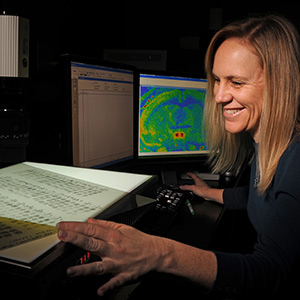On Dec. 12, a peer review panel analyzed two recent National Toxicology Program (NTP) studies, agreeing with the findings.
One report was about 2-hydroxy-4-methoxybenzophenone (2-H-4MB), or oxybenzone, an ultraviolet (UV) filter used in sunscreen and related products. The other involved perfluorooctanoic acid (PFOA), a substance found in many consumer and industrial products.
 Many products contain 2-H-4MB, including sunscreens, moisturizers with SPF, and lip balms.
Many products contain 2-H-4MB, including sunscreens, moisturizers with SPF, and lip balms.Results of the experts’ evaluation of the 2-H-4MB report are provided below. Learn more about the panel’s assessment of the PFOA study.
On the skin, in the body
NTP has been analyzing the safety of UV filters through a variety of in vitro and rodent studies. A new report involves 2-H-4MB.
That chemical often is added to sunscreen lotions, creams, and sprays used for protection from the sun’s damaging rays. Those products are applied to the skin, but 2-H-4MB and its metabolites have been found in urine, so it is clear the chemical is entering the body.
The two-year NTP study evaluated toxicity and carcinogenicity of the chemical in rats and mice that experienced long-term exposure.
Equivocal, or uncertain, evidence
 “There are knowledge gaps concerning the toxicity of chemical UV filters,” said McIntyre. “Previous NTP studies suggested that the rat testis and ovarian cycles are potentially affected.” (Photo courtesy of Steve McCaw)
“There are knowledge gaps concerning the toxicity of chemical UV filters,” said McIntyre. “Previous NTP studies suggested that the rat testis and ovarian cycles are potentially affected.” (Photo courtesy of Steve McCaw)“2-H-4MB has widespread use and exposure, including in children,” said Barry McIntyre, Ph.D., lead study scientist for the UV filter research program at NTP. “Exposure is higher in women due to these products being added to cosmetics and other personal care products.”
The chemical was given to rats and mice at three different concentrations, and the scientists looked for any evidence of tumors or other adverse outcomes. NTP found the following, and the panel agreed.
- Equivocal, or uncertain, evidence of carcinogenic activity of 2-H-4MB exposure in male rats. This was based on the low occurrence of benign, or noncancer causing, tumors in membranes that cover the brain, which were not observed in their unexposed counterparts.
- Equivocal evidence of carcinogenic activity in female rats based on the incidence of tumors in the thyroid gland, as well as uterine polyps in exposed animals.
- No evidence of carcinogenic activity in male or female mice.
NTP levels of evidence, from strongest to weakest: clear evidence, some evidence, equivocal evidence, and no evidence. A study may also be deemed inadequate for determining evidence.
Sheena Scruggs, Ph.D., is the digital content coordinator for the NIEHS Office of Communications and Public Liaison.)









